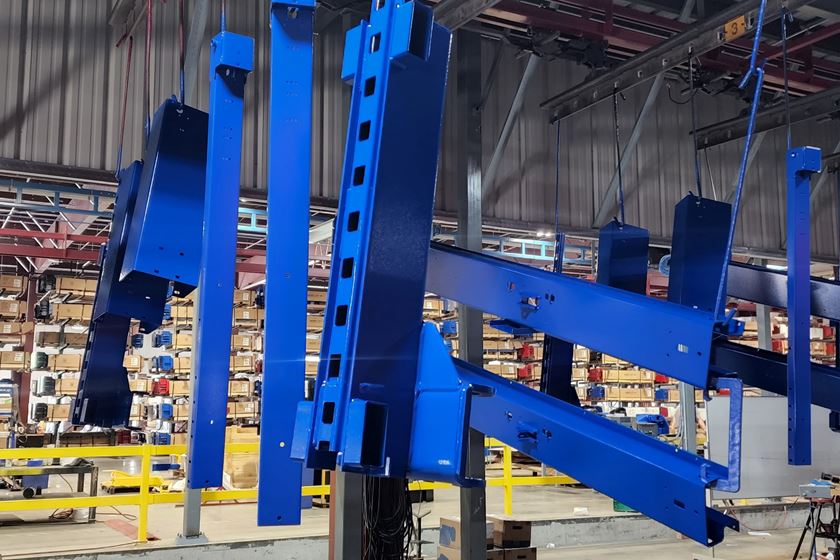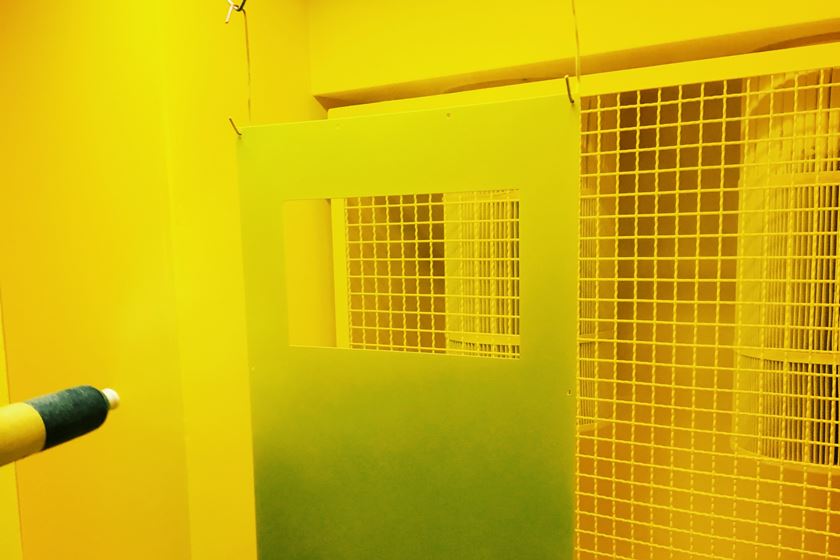Molten Salt, The perfect Cure For Playground Equipment
Appears in Print as: 'Child's Play is Serious Business'
Landscape Structures found the perfect cure for the finish on its playground equipment, molten salt...
Colorful playground equipment dots the center of New York's Central Park. A bright, whimsical play area is a favorite attraction. Vivid play areas brighten favorite restaurants nationwide. All of these benefit from the quality manufacturing that has made Landscape Structures, Inc., Minneapolis, Minnesota, an industry leader.
Landscape Structures is one of America's largest and best-known manufacturers of outdoor recreational equipment. It is also a leading industry exporter. The reason, according to Tom Wetter, manufacturing engineer, is consistent quality. "It is our number one priority, and has been for the quarter century we have been in business."
Featured Content
It would be difficult to name a product category where the demands are more varied or extreme. Playground equipment, far from being child's play, must be durable. It must maintain a bright, pleasing appearance with virtually no maintenance, despite continuous stress and abuse. It must perform despite daily UV exposure and fluctuating temperatures.
Because customers range from parks to schools, needs and budgets differ. Each system is custom designed. "In this way," said Mr. Wetter, "we are very much a job shop. We are also governed by a comprehensive Management Resource Planning system that controls production schedules and deliveries."
Depending on the size and site, as well as customer preference, equipment is fabricated from aluminum, steel or one of several plastics: Lexan polycarbonate, or high- or low-density polyethylene. Finishing, however, is the same, whatever base material is used.
"In 1995," Mr. Wetter explained, "we decided to minimize outsourcing. One of the key areas we wanted to bring in-house was finishing. We investigated and tested out numerous alternatives. What met our requirement was a 0.032 to 0.125 inch PVC coating followed by a single-stage salt cure. Of all the options we considered, this was the only combination of finish and cure method that could deliver the tensile strength, UV resistance and other product characteristics we wanted."
During its investigation, Landscape Structures and its three-man decision team were all newcomers to salt processing technology. "Interestingly," said Mr. Wetter, "each of us approached the question from a different vantage point. The owner's was financial and long term. Mine, as an engineer, was toward material performance. The foreman was most concerned with the predictability of the process, the maintenance it would require and waste treatment that might be needed.
Precision Quincy, a manufacturer of finishing systems and specialty ovens in Woodstock, Illinois, was selected to engineer and build the coating application system. The PVC curing system was subcontracted by Precision Quincy to Ajax Electric Co., Huntingdon Valley, Pennsylvania.
Mr. Wetter designed/engineered a dip-application system with a tank capacity of 2,200 gal. Parts originating from one of the several in-house production lines, as well as a few remaining outsource suppliers, are loaded on flexible fixture carriers. Carriers accommodate one to 100 parts, depending on size and shape. Power-and-free conveyers move the carriers to mild-steel tanks where parts are immersed in type two PVC for one to five min.
After a brief air set, parts are advanced in-line to the "Next Generation" salt furnace. Fully programmable, with a 35,000 lb capacity, the electric-powered furnace cures the PVC in a single-stage using Parcure 305, a nitrate/nitrite salt developed for this purpose by Heatbath/Park Metallurgical, Springfield, Massachusetts. Furnace dwell time is two to four min at 350F.
While PVC is heat-sensitive, parts requiring just two min of cure can be processed in the same load with those requiring four min, without compromising the finish quality. "The heat sink qualities of the salt bath and the precision controls we have on furnace temperature make this possible," said Mr. Wetter. Multiple colors of PVC can also be processed simultaneously.
The salt chemistry is chemically neutral to the nascent PVC. The cure range temperature of 380F is below any breakdown thresholds for PVC. Since the PVC is not chemically or thermally attacked, its viscosity is enough to hold it in place until crosslinking is complete. This results in a fast, uniform and effective cure.
After curing parts go through a one-stage water wash with mild agitation. The salinity must be monitored and controlled in this tank to provide efficient washing.
Waste generation was a major factor in Landscape Structure's decision. "It is essentially a non-issue with this curing method," according to Mr. Wetter. "We have done environmental studies and determined and documented that there are no air emissions to treat. Unlike convection, the submerged cure produces no smoke or other regulated emissions. The system allows us to meet both EPA and OSHA air standards without any add-on devices."
The news regarding solid waste is equally good. "There really is not any of that either," said Mr. Wetter. "We use an Econosal recycling system from Ajax." This system reclaims salts from all process stages and eliminates sewer discharge. "We get complete salt reclamation," said Mr. Wetter. "There is no wasted material. We add a small amount of salt periodically to regenerate, but dragout is virtually nil."
Before making its equipment decisions, Landscape Structures modeled utility costs for the salt furnace against those for appropriately sized infrared and convection ovens. "Our example, which was based on the level at which we are now processing (one carrier every six min, 40 hrs per week) showed the utility costs would have been in the neighborhood of 50 pct higher if we had chosen convection curing," said Mr. Wetter. "And this is despite the fact that the salt bath is maintained at temperature when not in use."
Landscape Structures has operated its new system for more than a year. The company posted record earnings in 1995, and forecasts an eight to 10 pct increase in fiscal 1996. New avenues are opening too. "We have just completed our first two OEM projects," noted Mr. Wetter. "And there are two more substantial programs on the CAD system.
"We take play seriously," said Mr. Wetter. "And believe we have the equipment and the manufacturing technologies to keep Landscape Structures on top."
RELATED CONTENT
-
A Current Affair: Examining the "No Amperage" Phenomenon
If you are performing a coating process that requires the use of a rectifier, you may have experienced the "no amperage" problem. Here's a look at the phenomenon and some solutions…
-
Preventing Solvent Pop
Preventing solvent pop on an industrial paint line...
-
Coating Thickness Measurement: The Fundamentals
A review of available test methods, common applications and innovative instrumentation...


















